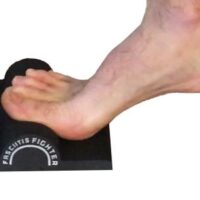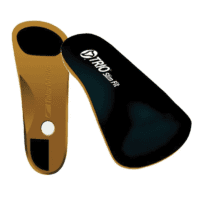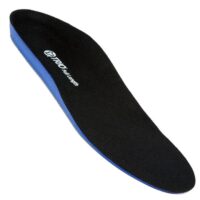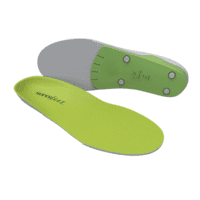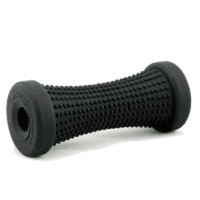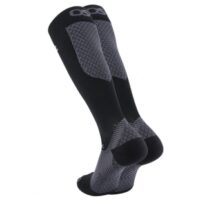What is Plantar Fasciitis?

What is Plantar Fasciitis?
Plantar fasciitis is a prevalent source of heel pain. It stems from inflammation or micro-tears in the plantar fascia, a vital tissue band that supports the foot arch and absorbs walking stresses. Various factors, including repetitive foot strain and poor biomechanics, can cause this condition.
Identifying the Causes
Plantar fasciitis primarily arises from traction and compression injuries. Traction injuries occur when the fascia is overstretched due to weak arch muscles or improper foot mechanics. On the other hand, compression injuries result from direct impacts, such as stepping on hard objects, which bruise the fascia.
Key Symptoms
The main symptoms include heel or arch pain, particularly after rest or in the morning. As the condition progresses, this pain becomes more frequent and intense, signifying worsening inflammation.
The Progression of Plantar Fasciitis
Initially, Plantar fasciitis causes occasional pain after exercise. Without intervention, it can lead to constant discomfort and potentially heel spurs, where calcium deposits form, complicating recovery.
Diagnosing Plantar Fasciitis
Diagnosis involves evaluating symptoms, medical history, and clinical examinations. Imaging techniques like X-rays or MRI can reveal changes in the fascia or the presence of heel spurs. Additional tests may sometimes be necessary to exclude similar conditions.
Risk Factors
Several factors increase the risk of developing Plantar Fasciitis:
- Intensive sports or occupations that stress the heel
- Being overweight
- Pregnancy-related ligament changes
- Foot arch abnormalities
- Age-related foot changes
- Inappropriate footwear
- Weak arch muscles
- Certain medical conditions, such as arthritis or diabetes
Effective Treatment Strategies
Fortunately, around 90% of cases improve with early treatment. This includes physiotherapy, lifestyle changes, soft orthotics, and occasionally corticosteroid injections for short-term relief.
The Role of Foot Biomechanics
Addressing foot biomechanics is crucial. Physiotherapists offer tailored treatments, including manual therapy, exercises, and sometimes orthotics. These interventions aim to correct underlying issues and prevent recurrence.
A Multistep Rehabilitation Approach
Effective rehabilitation involves multiple phases:
- Early Injury Protection
- Regaining Range of Motion
- Restoring Foot Arch Muscle Control
- Normalising Calf and Leg Muscle Control
- Correcting Foot Biomechanics
- Enhancing Running and Landing Techniques
- Gradual Return to Activities
- Footwear Assessment
Exercises for Recovery
Strengthening foot muscles and loosening the calf is beneficial. Foam rollers are popular among athletes. Foot arch rollers provide temporary relief for some. Your physiotherapist will guide you through specific exercises tailored to your condition. (Franettovich Smith et al 2020)

Exploring Other Treatment Options
In severe cases, a combined approach of physiotherapy and podiatry is recommended. This may include taping, orthoses, and medication. Night splints and plantar fasciitis socks can provide additional support, but their long-term effectiveness varies. Early research suggests that shockwave therapy may be beneficial in stubborn cases, but results vary.
The Impact of Weight and Load Management
Managing weight and foot load is essential, especially for individuals carrying extra weight, as it influences both the onset and duration of plantar fasciitis and heel spurs.
New Research
Recent studies have shown advancements in the treatment of plantar fasciitis. A systematic review highlighted the effectiveness of combined therapies, including manual therapy and exercise, in reducing pain and improving function (Franettovich Smith et al 2020). Another study found that shockwave therapy may be y effective for chronic cases (Melese et al. 2021).
Conclusion: Seeking Professional Advice
Plantar fasciitis, while common, can significantly impact your daily life. Understanding its causes, symptoms, and treatment options is the first step towards recovery. However, each individual’s journey is unique.
What to Do?
Consulting a physiotherapist ensures you receive a personalised treatment plan that addresses the root causes of your discomfort. Early intervention is key to preventing long-term issues and getting back on your feet pain-free. For specific guidance and a tailored treatment plan, please consult your trusted foot physiotherapist, doctor, or podiatrist.
Rochedale - Call 38410277
Book Online: RochedaleSalisbury - Call 32751044
Book Online: SalisburySandgate - Call 32691122
Book Online: SandgatePlantar Fasciitis FAQs
- What is the main cause of Plantar Fasciitis? The main cause is overstressing the plantar fascia due to repetitive foot arch strain, poor foot biomechanics, excessive weighted loading or training regimes, plus improper footwear.
- How long does it take for Plantar Fasciitis to heal? Recovery can take anywhere from a few weeks to months or even a year, depending on the severity and the effectiveness of the treatment plan. Early treatment seems to be the best way to resolve your condition quickly.
- Can Plantar Fasciitis go away on its own? While some mild cases may resolve with rest and lifestyle changes, most moderate or severe cases require targeted treatments such as physiotherapy for full recovery.
- What are the best treatments for Plantar Fasciitis? Effective treatments include physiotherapy, orthotics, manual therapy, and specific exercises. In stubborne cases, shockwave therapy or corticosteroid injections may be trialled.
- Is walking good for Plantar Fasciitis? Walking can be beneficial if done with proper footwear and techniques. However, excessive walking without addressing the underlying issues can worsen the condition. Check with your physiotherapist or podiatrist first.
- Can Plantar Fasciitis cause other problems? Yes, if left untreated, it can lead to complications such as heel spurs and chronic heel pain, affecting overall foot function.
Related Articles
- Heel Pain Causes and Treatment – Discover common causes of heel pain and various treatment options available.
- Foot Arch Pain Relief Strategies – Learn about what causes pain in the foot arch and how to alleviate it.
- Footwear and Orthotics for Plantar Fasciitis – Understand the importance of selecting the right footwear and how orthotics can help manage plantar fasciitis.
- Exercises for Strengthening the Foot Arch – Find out which exercises can strengthen the foot arch and potentially alleviate plantar fasciitis symptoms.
- The Role of Physiotherapy in Managing Heel Pain – Learn how physiotherapy can be used to treat heel pain, including plantar fasciitis.
- Plantar Fasciitis versus Heel Spurs – What’s the difference between the two conditions?
- Mayo Clinic – Plantar Fasciitis – Provides a comprehensive overview of plantar fasciitis, its symptoms, causes, and treatment options.
- WebMD – Plantar Fasciitis Guide – Offers detailed information about plantar fasciitis, including home remedies and medical treatments.
- Healthline – Plantar Fasciitis Treatment and Symptoms – Discusses various treatments and symptoms of plantar fasciitis, with practical advice for managing the condition.











